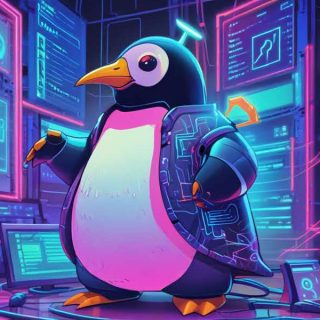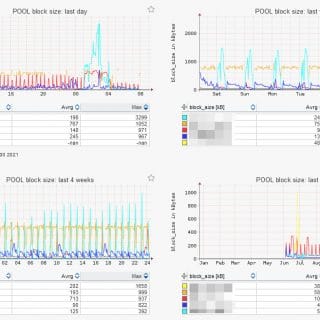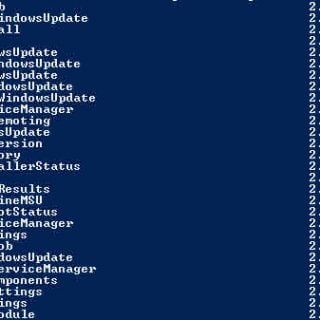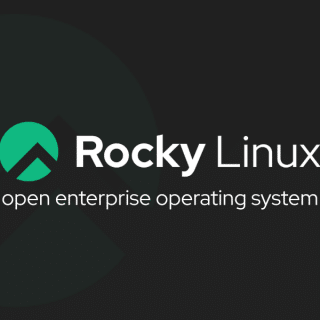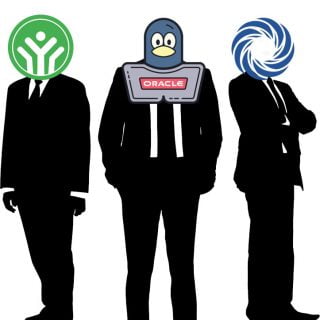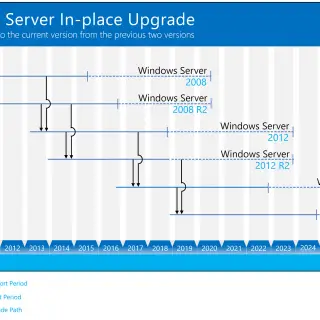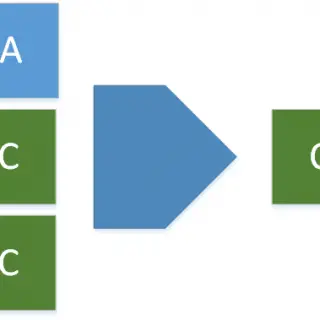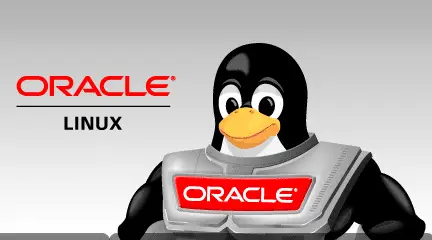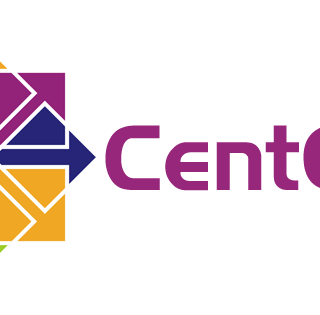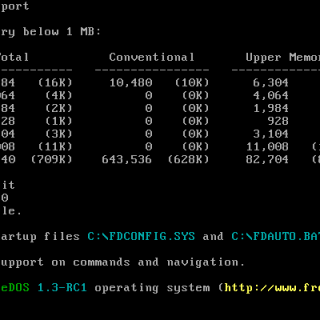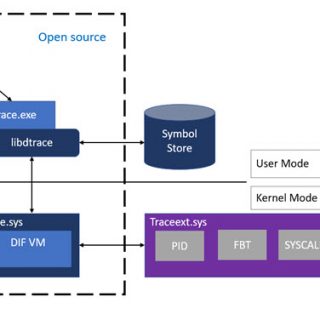Category: Operating System
An operating system (OS) is system software that manages computer hardware and software resources and provides common services for computer programs.
Spreading infrastructure and constantly shifting needs in today’s IT environment may easily convert system administration into a wild beast. Manual setups become laborious and prone to errors, which impedes creativity and agility. This is where automation becomes useful, providing your IT environment with a potent tool to tame the beast and restore order.
Let me introduce you to Oracle Linux Automation Manager (OLAM), a powerful tool that makes infrastructure provisioning, configuration management, and deployment procedures much easier. Based on the open-source giants Ansible and AWX, OLAM provides a centralized web interface for effective management and visibility into your IT environment.
Data integrity is critical to the digital world. The backbone of this world, filesystems, are essential to the organization and security of this data. Ext4 is the most popular filesystem among them all because of its efficiency and dependability. But the JBD2 journaling layer is a secret weapon that powers its success.
This blog article explores the world of JBD2, including its features, goals, and effects on Ext4. We will make complex topics understandable to readers with different degrees of technical competence by navigating through them in a straightforward and simple manner.
We have a problem on our Oracle Database servers which are hosting by Oracle Linux servers, when Oracle Databases putting to Maximum Availability protection mode, some workloads impacts performance whole database ecosystem. The workloads are related to some tasks which performed from by application servers and the tasks needs huge read/write I/O on storage arrays. We are using DELL EMC Unity/Unity XT (All Flash/Hybrid Flash) family in most of projects. I did lots of searches and found nothing at first step. I had only one clue, I/O block size was very large during performing tasks by database servers.
Operating system is the core of any system and we have to keep operating system update cause of preventing performance issues, unplanned downtime and fix security vulnerabilities. Windows (client and servers) has a standard terminology for receiving updates monthly and most of organizations using Windows Server Update Services to applying updates of multiple servers/client. Updates would be downloaded and installed on multiple servers/clients automatically but service downtime is always the biggest concern but another concern is installing updates on multiple machines and rebooting systems during planned downtime. PowerShell and WinRM would help us when they come as PSWindowsUpdate PowerShell module!
CentOS born from nothing and was everything for some businesses but Red Hat deposed him from the kingdom. I have published a post about CentOS Replacement Candidates and Rocky Linux was one of candidates. Rocky Linux was under development by Rocky community and release candidate version of Rocky Linux was released on April 30, 2021.
CentOS was most popular operating system for cloud but Red Hat acting same as COVID-19 and change the world forever. CentOS was a real Community Enterprise Operating System but till December 2020.

Virtual Machine needs guest operating system (OS) to operates same as physical machine. Operating system is a system software and has life cycle same as other software. But what should we do about updating and upgrading guest operating systems in virtual environments. Guest Operating System Life-Cycle Most implemented services don’t need to any new features on operating system, so we should choose guest operating system with long term support. Both Windows and Linux (Some distributions) offering different of channels. You can choose a path that more stable or choose a path for have new features. Update vs Upgrade When you need to newest technologies and features on the latest major version of operating system, you have to do Upgrade. But when you are applying regular patches on operation system, you are doing Update. Keep Update Guest Operating System Operating systems’ vendors releasing patches during operating system life-cycle. Apply patches (Security or others) to keep guest operating system secure and stable as well as your services and business. Even installing service packs or upgrading to a minor version of current guest operating system is an update process and there is no limitation to do it. When We Should Upgrade Guest Operating...

Cost of storage is the biggest piece of IT budget in any company (Of course not EMC, HPE or other like them 😀 ) and the storage spaces is eating by databases, other data files and backup files as well. Lot of those data file not be used once generated!. I have serious issue with these types of data and especially log files that one of dark data types. I can’t stop generating those data and the related teams are always crying about free space on their servers. They want just Linux servers (Seems, they don’t know Windows has NFS services as well), because they are using shared space on application servers to storing log files and others via NFS. I have offered other solutions such as using Windows as NFS server and use deduplication on Windows Servers, this feature is really good. I have used Windows deduplication on our backup proxy servers and result was incredible. Anyway, they want to Linux server (Not even other Unix-Like!), so I started to googling these: Don’t panic, most Linux’s modern file systems have no native deduplication and transparent compression and must be enabled with third-party software. Let’s see what is deduplication and...
Oracle Autonomous Linux executes automatic patch updates and tuning without human interaction improving IT staff productivity, security, and downtime.

Today, CentOS Linux 8.0.1905 has been released and available to download now. The version is first version of CentOS Linux 8. Same as previous version, the new version is based on Red Hat Enterprise Linux source codes but it’s totally free. CentOS 8 end of life is May 2029 (10 years, same as previous versions). Improvements and fixes are same as RHEL 8 and CentOS 8.0.1905, CentOS includes all new features actually. But there is a big change! Read more on CentOS-8 (1905) Release Notes. What’s CentOS Streams? CentOS Stream is available based on CentOS Linux 8 software packages the project has been building over the summer combined with the latest Red Hat Enterprise Linux (RHEL) 8 development kernel. CentOS Stream will be a rolling-release Linux distro that exists as a midstream between the upstream development in Fedora Linux and the downstream development for Red Hat Enterprise Linux (RHEL). It is a cleared-path to contributing into future minor releases of RHEL while interacting with Red Hat and other open source developers. This pairs nicely with the existing contribution path in Fedora for future major releases of RHEL. Read more on Presenting CentOS Stream. Download CentOS 8.0.1905 CentOS 8.0.1905 is available...

FreeDOS is an open source DOS-compatible operating system that you can use to play classic DOS games, run legacy business software, or develop embedded systems. Any program that works on MS-DOS should also run on FreeDOS. It doesn’t cost anything to download and use FreeDOS. You can also share FreeDOS for others to enjoy! And you can view and edit our source code, because all FreeDOS programs are distributed under the GNU General Public License or a similar open source software license. FreeDOS Software Since 1998, each program included in the FreeDOS distribution is made available as a “package.” The distribution divides these FreeDOS software packages into groups, sometimes called “sets.” The BASE package group contains only those programs that reproduce the functionality of classic DOS systems. The other package groups contain software that you may find useful, such as games, editors, and developer tools. BASE Programs that provide the functionality of classic DOS Archivers Tools to compress files and create archives. Boot tools Utilities to help you boot your computer Development Development tools such as compilers and assemblers Editors Editors and simple word processors that let you edit text files Emulators Programs that emulate other systems Games Fun games that you can...
The redhat-upgrade-tool provides a way to upgrade Red Hat Enterprise Linux 6 systems to Red Hat Enterprise Linux 7. The redhat-upgrade-tool command is a program to collect the information for upgrade and prepare the environment. It includes downloading kernel, and initial ram image, and packages.
This new server virtualization management platform can be easily deployed to configure, monitor, and manage an Oracle Linux Kernel-based Virtual Machine (KVM) environment with enterprise-grade performance and support from Oracle. Red Hat did it and developed Red Hat Enterprise Virtualization Manager based on the open source oVirt project .
Powerful hardware, modern and new operating system are nothing when those components are not properly configured. Best practices which published by vendors, helping us to achieved good performance and reduce issues but best practices are general and may be not tested on specific hardware.
DTrace is a comprehensive dynamic tracing framework created by Sun Microsystems for troubleshooting kernel and application problems on production systems in real time. Originally developed for Solaris, it has since been released under the free Common Development and Distribution License (CDDL) in OpenSolaris and it’s descendant illumos, and has been ported to several other Unix-like systems.
